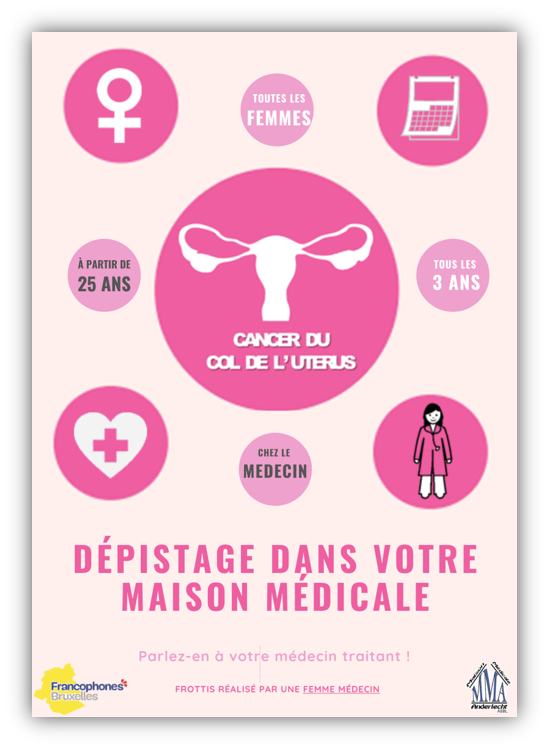Cervical cancer represents a major public health issue, requiring constant efforts in terms of prevention and of screening. Recent advances in this area focus not only on vaccination against the human papillomavirus (HPV), but also on the establishment of systematic screening programs. Thanks to regular tests, it is now possible to detect early abnormalities of the cervix early, thus making it possible to intervene before these lesions progress to cancer. Advances in vaccination coverage and screening methods have significantly improved the prospects of prevention of this pathology.
|
IN BRIEF
|
Cervical cancer represents a major public health issue. Thanks to advances made in the field of preventive medicine, innovative strategies have emerged to prevent this disease. This article highlights significant advances regarding vaccination, screening and good monitoring practices.
Vaccination against human papillomavirus (HPV)
There vaccination against human papillomavirus (HPV) is one of the most significant innovations in the fight against cervical cancer. Available vaccines offer protection against the highest-risk strains of HPV, which cause the majority of cases of cervical cancer. It is recommended to vaccinate young girls, ideally before the start of their sexual life, to maximize the effectiveness of protection. According to some studies, this vaccination can prevent up to 90% critical HPV infections, thereby significantly reducing the incidence of this disease.
Regular screening
Another fundamental aspect of prevention is screening regular. Current recommendations recommend carrying out a smear screening test every three years for women aged 25 to 29, after receiving two normal tests one year apart. For women aged 30 and over, this screening can be done every five years if associated with an HPV test. This allows any abnormalities to be identified early, improving the prospects for treatment and cure.
Education and awareness
Education and awareness women’s risk factors for cervical cancer also play a crucial role in prevention. Educating women about the dangers of smoking, sexually transmitted infections, and relevant medical history is essential. Awareness campaigns aim to promote better knowledge of symptoms and encourage regular medical follow-up, including gynecological consultations.
Improved access to care
Improving access to health care is essential to ensure that all women can benefit from screening and vaccination. Government and institutional initiatives have been put in place to increase coverage vaccination and screening. These efforts aim to reduce inequalities in access to cervical cancer prevention and treatment, particularly in rural areas and disadvantaged populations.
Additional measures and monitoring
Finally, it is crucial to adopt complementary measures such as continuous surveillance and follow-up of women who have received treatments for precancerous lesions. Follow-up protocols have been developed to detect possible recurrences and ensure that patients receive optimal support throughout their care journey. The link between nutrition, lifestyle and cancer prevention is also highlighted, encouraging a holistic approach to health.

Cervical cancer represents a major public health concern, but significant advances in its prevention have been made in recent years. The combination of vaccination against human papillomavirus (HPV), regular screening tests and increased awareness can reduce the risk of developing this cancer. This article presents recent advances in the prevention of this disease and associated recommendations.
HPV vaccination
Vaccination remains one of the most powerful tools for preventing cervical cancer. The vaccine targets the most common and dangerous strains of HPV, helping to reduce up to 90% of infections which can lead to this cancer. It is recommended to vaccinate young girls before the start of their sexual activity, generally between 11 and 14 years of age, while also allowing vaccination up to 26 years of age. Expanding vaccination programs in schools and health clinics could significantly increase vaccination coverage.
Regular screening
Screening is an essential complementary method to vaccination. Current recommendations stipulate the realization of a cervical smear every three years for women aged 25 to 29, after two normal tests one year apart. For women aged 30 to 65, screening every five years, in combination with an HPV test, is recommended. This regular monitoring makes it possible to identify precancerous lesions and to intervene before malignant transformation occurs.
Awareness and education
Another crucial aspect of prevention lies in the awareness and the education of the populations. Information campaigns should aim to inform young girls and their families about the importance of vaccination and screening. Information brochures, school-based interventions and community seminars can increase the visibility of these health issues. Health professionals also play a key role by discussing these topics during consultations, raising patients’ awareness of risk factors and the need to be screened.
Avoiding risk factors
The consumption of tobacco is considered a major risk factor in the development of cervical cancer. Women who smoke should be informed of the dangers of smoking, not only for their overall health, but also regarding the increased risk of HPV infections progressing to cancer. Encouraging smoking cessation, through support programs and treatments, must be an integral part of prevention initiatives.
Research and innovation
Advances in research are essential to improve the prevention strategy. New vaccines and therapeutic alignments are under development. Research continues to focus on innovative methods of screening, aimed at improving the speed and accuracy of cervical analyses, such as the use of liquid biopsy which could offer a less invasive alternative. Clinical trials and cohort studies are underway to evaluate the effectiveness of these new approaches.

Prevention of cervical cancer has made significant progress in recent years, thanks to a better understanding of the disease as well as the evolution of screening and vaccination methods. The implementation of vaccination programs targeting young girls from the required age has made it possible to significantly reduce the number of infections by human papillomavirus (HPV), responsible for the majority of cases of cervical cancer. This vaccination, combined with a regular screening, constitutes an effective preventive strategy to reduce the incidence and mortality associated with this pathology.
Regarding screening, recommendations have evolved to encourage systematic examination at regular intervals. Women are now invited to complete a screening smear every three years from the age of 25, after previous normal results. This approach allows early detection of precancerous lesions, thus facilitating early interventions before the disease progresses.
It is also essential to mention the importance of education and public awareness. Although prevention tools are available, their effectiveness depends largely on their adoption by women. Targeted information campaigns are necessary to improve vaccination coverage and the screening participation rate. In addition, going through regular consultations with healthcare professionals is crucial for monitoring and assessing individual risks.
Finally, research continues into treatments for precancerous lesions and cervical cancer, offering hope for future advances in the management of this disease. Through these joint efforts in vaccination, screening and education, it is possible to significantly reduce the impact of cervical cancer on women’s health worldwide.











